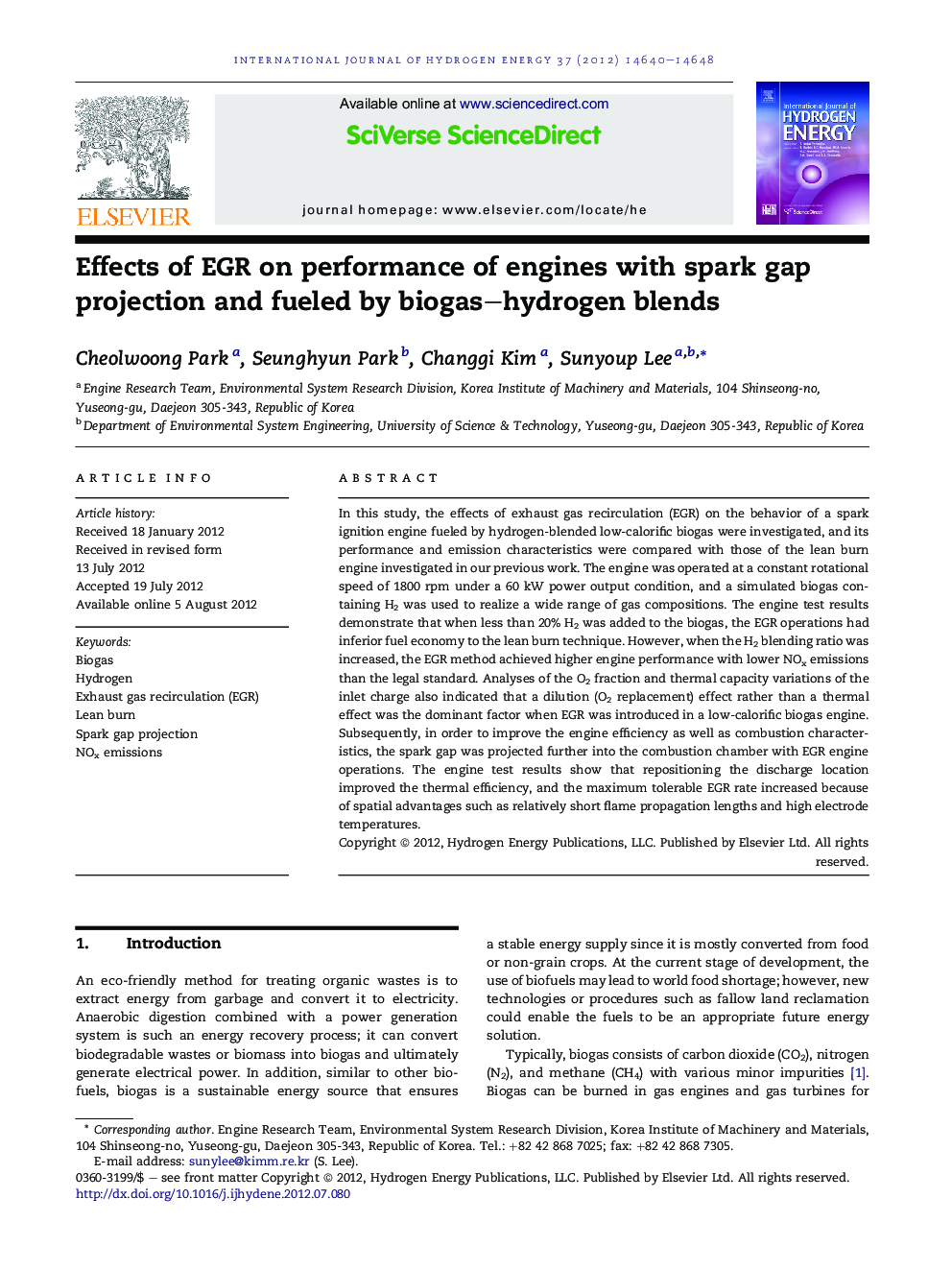| کد مقاله | کد نشریه | سال انتشار | مقاله انگلیسی | نسخه تمام متن |
|---|---|---|---|---|
| 1274813 | 1497550 | 2012 | 9 صفحه PDF | دانلود رایگان |

In this study, the effects of exhaust gas recirculation (EGR) on the behavior of a spark ignition engine fueled by hydrogen-blended low-calorific biogas were investigated, and its performance and emission characteristics were compared with those of the lean burn engine investigated in our previous work. The engine was operated at a constant rotational speed of 1800 rpm under a 60 kW power output condition, and a simulated biogas containing H2 was used to realize a wide range of gas compositions. The engine test results demonstrate that when less than 20% H2 was added to the biogas, the EGR operations had inferior fuel economy to the lean burn technique. However, when the H2 blending ratio was increased, the EGR method achieved higher engine performance with lower NOx emissions than the legal standard. Analyses of the O2 fraction and thermal capacity variations of the inlet charge also indicated that a dilution (O2 replacement) effect rather than a thermal effect was the dominant factor when EGR was introduced in a low-calorific biogas engine. Subsequently, in order to improve the engine efficiency as well as combustion characteristics, the spark gap was projected further into the combustion chamber with EGR engine operations. The engine test results show that repositioning the discharge location improved the thermal efficiency, and the maximum tolerable EGR rate increased because of spatial advantages such as relatively short flame propagation lengths and high electrode temperatures.
► Stable engine operations are possible using extremely low-Btu gas with 80% N2.
► EGR and lean burn modes have higher efficiencies at high and low H2, respectively.
► Dilution is more dominant than thermal effects in EGR operations of low-Btu gas.
► Projected spark gaps extend the EGR limit, thus increasing efficiency.
► Electrode gap projections do not cause any noticeable changes in emissions.
Journal: International Journal of Hydrogen Energy - Volume 37, Issue 19, October 2012, Pages 14640–14648